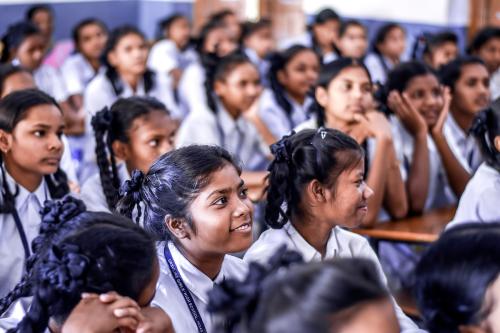From an intergenerational perspective, the U.S. income distribution is sticky at both ends. Affluence and poverty are both partially inherited. Policy and research has focused on upward mobility, especially from the bottom. But relative intergenerational upward mobility is only possible with equivalent rates of downward mobility, where much less attention has been directed. Those born into more affluent families may be protected from falling by a “glass floor,” even if they are only modestly skilled.
In this paper we identify a group raised in higher-income households (top two-fifths of family income), who are predicted on the basis of their skills—both cognitive and non-cognitive—to fall down the ladder, but who remain in the higher-income bracket.
Our principal empirical findings are as follows:
1. Skills, as measured in adolescence by the Armed Forces Qualifying Test (AFQT) and coding speed, strongly predict the chances of being in a higher-income household as an adult.
2. A sizable proportion (43%) of those who remain in a higher-income household are of modest skill, and would be expected on the basis of skill to fall.
3. Getting a college degree is associated with a 23% greater chance of an adolescent of modest skills—i.e., predicted to fall—remaining in a higher-income household as an adult.
4. Lower-income adolescents with the smarts and drive to get into the higher-income bracket have a 42% greater chance of making it if they have a college degree.
From a mobility perspective, it would be better if college slots currently taken up by modestly skilled kids who remain at the top were filled instead with the smart, motivated kids who remain stuck at the bottom.



